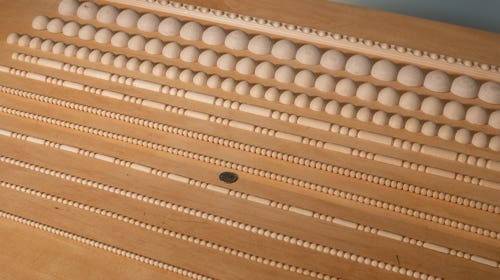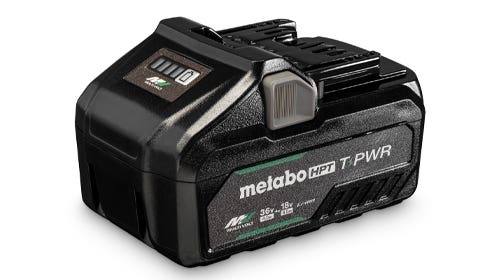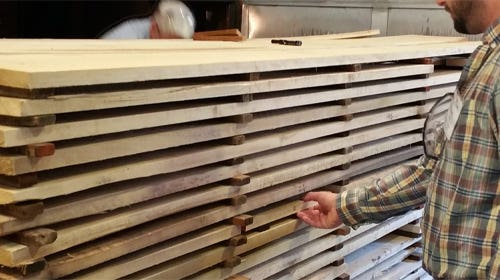Table saw suit nets $1.5M verdict
A recent verdict resulting from a table saw injury raises the issue of whether stricter safety regulations will be imposed on manufacturers. A compelling factor in the case involved SawStop’s…
A recent verdict resulting from a table saw injury raises the issue of whether stricter safety regulations will be imposed on manufacturers. A compelling factor in the case involved SawStop's blade-stopping device, which was not on the saw that caused the injury.
{loadposition position10}
Carlos Osorio of Malden, Mass., severely injured his fingers several years ago in a table saw accident while laying hardwood floors. In March, Osorio was awarded $1.5 million through a jury verdict that found One World Technologies Inc. of Anderson, S.C., maker of Ryobi saws, guilty of negligence in manufacturing and a breach of warranty of merchantability.
"The jury found for us on both counts," says Osorio's lawyer, Richard Sullivan, of Sullivan and Sullivan in Wellesley Heights, Mass. "They found that the saw was defective."
Sullivan filed a lawsuit in 2006 in U.S. District Court in Boston. He says that even after multiple surgeries and medical bills reaching six figures, Osorio's hand is permanently fixed in one position because of two severed tendons. Osorio, now 30, is a Columbian native who had a translator throughout the trial.
Laws supporting the verdict
In Massachusetts, a comparative negligence standard is used, which means if a consumer himself is determined to be 50 percent or less negligent, he can still recover, Sullivan explains. In the Osorio case, the jury assigned 35 percent negligence to Osorio, and 65 percent negligence to Ryobi. But because the saw was also deemed defective, the negligence percentage of the user didn't matter. The breach of warranty of merchantability is a form of strict product liability, making the manufacturer liable for damages regardless of a product user's own mistake.
"If it was only a negligence claim, it would have been reduced by 35 percent. But because it was a defective saw - according to the jury - they found a breach of warranty of merchantability, then there is no reduction for negligence."
Ryobi had 28 days following the veridict to file an appeal. But by mid-April, the clerk's office said no appeal had been filed.
"We don't think there was an appealable error here. [The defense] had a full opportunity to put in their evidence. If anything, the judge bent over backwards to allow the defendants to put in whatever they wanted and was somewhat restrictive in terms of what we could get in, so I don't see any grounds for an appeal here," says Sullivan.
"We are evaluating the results with our lawyers, and evaluating how to proceed," says Jason Swanson, a spokesman for One World Technologies, in a prepared statement. "Notwithstanding the outcome of this trial and any possible appeal, we remain confident that the saw which was the subject of this lawsuit was well-designed and manufactured with all due consideration for the needs and safety of the consumer."
The Home Depot, where the saw was purchased, was also a defendant, but the jury decided it was not liable. Sullivan says that finding is inconsistent with Massachusetts law, which basically says that if a saw is found defective under implied warranty, the seller of the saw is liable without regard to fault. If there is an appeal, the plaintiff's legal team will raise that issue. It would not have an impact on the amount set in the verdict.
SawStop's involvement
Videos of SawStop's safety device were shown at the trial and testimony was provided by inventor Stephen Gass.
Gass testified that his technology could be put on a smaller saw, such as the Ryobi BTS 15 involved in the accident. Gass explained that Ryobi had a chance to patent the device and signed a license agreement in 2002. When he noticed a typo in the agreement and called Ryobi back for a correction, the delays began, and after several attempts, Ryobi never followed through.
"The basic theory of the case was that the saw should have had something like SawStop - either SawStop or something that the industry has developed on its own to prevent such an injury. The question in debate was whether SawStop would have prevented the injury and whether SawStop was technically viable with the saw. The jury found that it was and that it would have prevented the injury," says Gass in an interview with Woodshop News.
"Therefore, the design of the bench-top table saw was defective because it did not have a system to protect the user in the event of contact. That's a big deal in terms of the statement this sends to manufacturers about making their saws reasonably safe."
The phrase "reasonably safe" comes down to an economic test, explains Gass. It wouldn't make sense to put a $1 million device on a $100 saw to prevent injuries. The test is whether the cost is more to prevent the injury than the cost of the injuries that would be prevented.
Initiation of claim
While Osorio brought this claim himself, his company's workers' compensation insurer in Massachusetts had experienced enough table saw injuries to hire his legal team as a third-party plaintiff. The insurer will get back whatever the dollar amount paid in medical bills and the plaintiff's out-of-work expenses from the verdict amount.
The plaintiff's co-counsel, George Carpinello, explained that workers' compensation insurers are looking for legal help with similar claims. "Some of our clients, five major insurance companies around the country, have said enough is enough. Steven Gass introduced this technology to Ryobi back in the fall of 2000. And Ryobi reviewed the technology briefly, negotiated with Gass for over a year, signed a contract with Gass to use the technology and then never did anything."
Ryobi offered depositions at trial from their representatives. Gass and the plaintiff's legal team both said these depositions revealed that Ryobi representatives pointed fingers at each other about the contract not being put into effect.
Carpinello adds that because of the lawsuit, the Consumer Product Safety Commission is considering a rule requiring flesh-detection technology on table saws.
"That process has not formally been initiated, but we know that last fall the Power Tool Institute (a group of power tool manufacturers) went back to the CPSC and urged them not to adopt the rule; and Gass went down and urged them to adopt the rule. Our understanding is that the commission directed the staff to begin the rulemaking process, although the rule has not yet been published in the Federal Register."
More suits?
Gass says the precedent being formed is one he's foreseen for a long time.
"I think this establishes what I have thought all along and that is that saws that don't incorporate SawStop being sold today are unreasonably dangerous and defective and should not be sold. I don't think it is ethical or responsible for a manufacturer today to produce a table saw without something to protect the user beyond the standard guards," says Gass.
Sullivan confirmed that he and Carpinello are involved in approximately 60 pending lawsuits throughout the U.S. against table saw manufacturers for failing to adopt the SawStop blade-stopping device. Half of the pending lawsuits involve Ryobi.
"We're working mainly on suits against Ryobi, which is by far the biggest, because Ryobi is a big seller and a lot of these accidents occur on the lower-end saws," he says.
"The only reasons these [table saw] lawsuits exist is we have documented technology [SawStop] that says you put your finger into a blade for whatever reason and that blade is going to retract such that you're going to have a minor scratch in 99 percent of the cases ... and manufacturers presented with that technology say they're not going to use it."
This article originally appeared in the May 2010 issue.







